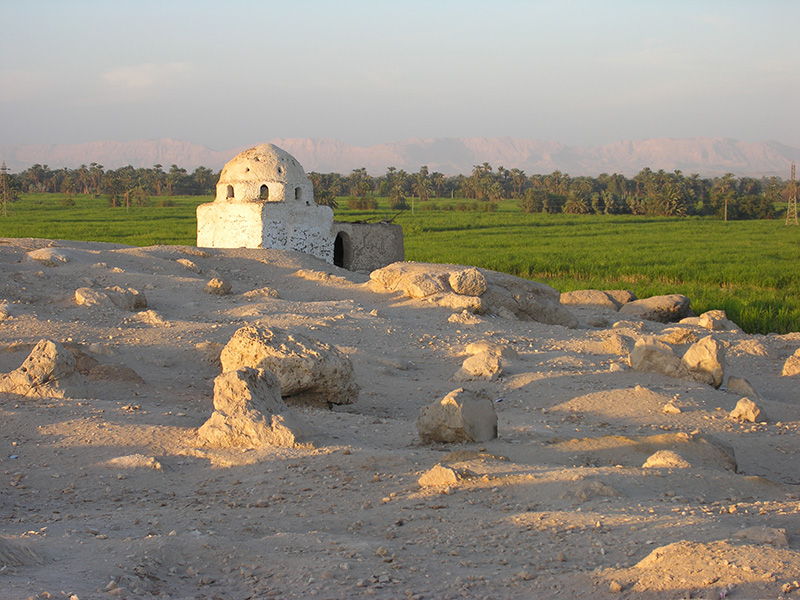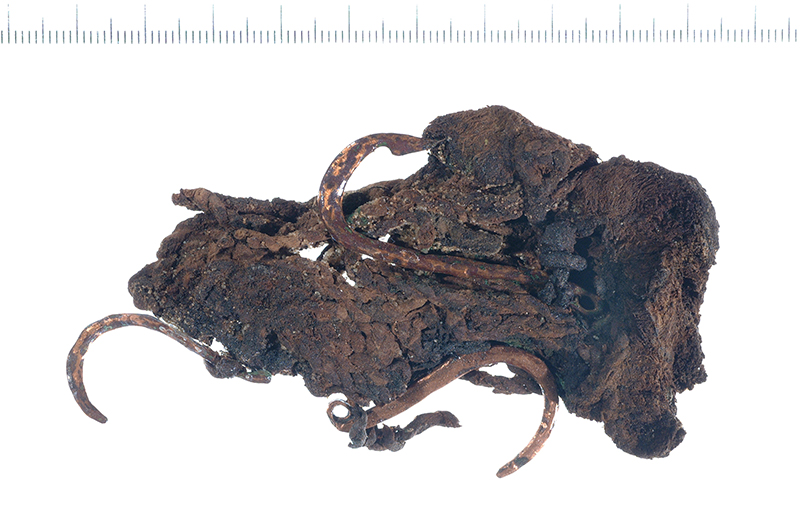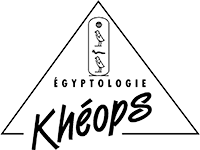ADAIMA
Predynastic settlement and cemetery in Upper Egypt
■ Fieldwork dates
1989-2005
■ Project director
Béatrix MIDANT-REYNES (CNRS)
■ Participants
Tim ANDERSON | Nathalie BADUEL | Laurent BAVAY | Hugues BOISSON | Krista BONI | José BRAGA | Gaëlle BREAND | Michel BRENET | François BRIOIS | Nathalie BUCHEZ | Élodie CABOT | Hélène COQUEGNIOT | Patrice COURTAUD | Éric CRUBÉZY | Henri DABERNAT | Morgan DE DAPPER | Chantal DE JAEGER | Christian de VARTAVAN | Beate DE VLIEGHER | Gauthier DEVILDER | Jean-Philippe DELAGE | Patrick DELEUZE | Sylvie DUCHESNE | Ebeid MAHMOUD HAMED | Aline EMERY-BARBIER | Daniel GÉRARD | Frédéric GUYOT | Hassan IBRAHIM EL-AMIR | Stan HENDRICKX | Stéphane HEROUIN | Albert HESSE | Christiane HOCHSTRASSER-PETIT | Frédéric JALLET | Thierry JANIN | Jana JONES | Alain KERMORVANT | Olivier KEYSER | Damien LAISNEY | Guilhem LANDIER | Georges LARROUY | Claude LECHEVALIER | Alain LECLER | Verle LINSEELE | Christine LORRE | Frank MAZEREL | Marie MILLET | Mathilde MINOTTI | Claire NEWTON | Daniel PARENT | Pierre POUPET | Dominique PROST | Thierry RAKOTONDRAMASY | François RENEL | Joseph SERDULT | David SEVE | Luc STANIASZEK | Yann TRISTANT | Wim VAN NEER | Laëtitia VIGNAU | Philippe WALTER | Luc WATRIN | Michel WUTTMANN
■ Institutions
- Institut français d’archéologie orientale (Le Caire)
- Centre d’Anthropologie, UMR 8555, CNRS, EHESS, Université Paul Sabatier (Toulouse)
-
French Ministry of Foreign Affairs
■ Presentation
The site of Adaima is located in Upper Egypt, on the western bank of the Nile River, 8 km south of Esna. Located on the desert margins, along the alluvial plain, the site comprises a large settlement area of ca. 15 hectares and two cemeteries dating to the 4th millennium BCE. It therefore falls under the Naqada culture, which is constituted from all Predynastic cultures of Upper Egypt.
The site of Adaima was excavated from 1989 to 2005, under the direction of Béatrix Midant-Reynes and Éric Crubézy for the cemeteries, on behalf of IFAO and with the financial support of the French Ministry of Foreign Affairs. The archaeological works gathered an interdisciplinary team composed of archaeologists, anthropologists, researchers specialised in artefacts, environment, fauna, as well as in archaeological scientific drawings and in conservation and restoration, to simultaneously handle the study of the settlement area and of the cemeteries.
Excavations of the settlement area covered two different geomorphological zones: a large sandy plain and a silt terrace correlated with the Wild Nile event, ca. 12.000 BCE. Despite the destruction due to repeated human activity in this area close to the alluvial plain, several occupation sectors were identified and excavated.
On the sandy plain, small habitation units were excavated, with a basic architecture, made from wooden stakes, and associated with open-air hearths. On the silt terrace, an abundant material, unfortunately mixed by later diggings, was recovered from carefully built circular and rectangular pit silos. The ceramic material and several radiocarbon dates place the occupation on long duration, from ca. 3700 BCE to the beginning of the 3rd dynasty, ca. 2700 BCE. The evolution of the settlement during the 4th millennium BCE is the subject of a PhD thesis by Nathalie Buchez (see list of publications).
The excavation of the cemeteries was made according to commonly used practises in thanatoarchaeology. The excavation, led by physical anthropologists, allow critical observations to comprehend the funerary customs (modes of decomposition in an open or closed environment, position of the hands and fingers, etc.).
At Adaima, the excavation of nearly 800 tombs, most of which were intact, allowed us to entirely renew our understanding of the funerary practises during the period considered here. In addition, a palaeobiological approach, relying on DNA extraction, was developed early in the project and led to a study of diseases in an epidemiological perspective.
Three monographs have been published, a fourth one is in press. The full publication of the 600 tombs of the eastern cemetery is on-going.
.
■ Main publications
The site has already been the subject of three monographs, the fourth one, relating to body ornaments, is in press.
Midant-Reynes Béatrix & Buchez Nathalie, Adaïma 1. Économie et habitat, Fouilles de l’Institut français d’archéologie orientale (FIFAO) 45, Le Caire, 2002.
Crubézy Éric, Janin Thierry & Midant-Reynes Béatrix, Adaïma 2. La nécropole prédynastique, Fouilles de l’Institut français d’archéologie orientale (FIFAO) 47, Le Caire, 2002.
Crubézy Éric (dir.), Adaïma 3. Demographic and Epidemiological Transitions before the Pharaohs, Fouilles de l’Institut français d’archéologie orientale (FIFAO) 76, Le Caire, 2017.
Minotti, Mathidle, Adaïma 4. La parure prédynastique en contexte funéraire. Le cas d’Adaïma, Fouilles de l’Institut français d’archéologie orientale, Le Caire, sous presse.
■ Articles published in Archéo-Ni
Archéo-Nil 30 (2020)
Midant-Reynes Béatrix & Tristant Yann
La violence à l’époque prédynastique
37-56
Archéo-Nil 28 (2018)
Crubézy Éric
26 ans après. Archéologie funéraire et paléobiologie : L’enjeu culturel
19-29
Crubézy Éric, Duchesne Sylvie, Donat Richard, Gérard Patrice &Dabernat Henri
Évolution humaine, tuberculose et démographie : Adaïma et le phénomène « NDT »
31-42
Archéo-Nil 27 (2017)
Minotti Mathilde
La faïence aux périodes nagadiennes à Adaïma. Les balbutiements d’une innovation technologique pour la parure ?
27-48
Archéo-Nil 21 (2011)
Buchez Nathalie
Chalcolithique final (ou Moyen ?), Nagada IIC-D-IIIA
Archéo-Nil 20 (2010)
Crubézy Éric
Le peuplement de la vallée du Nil
25-42
Archéo-Nil 15 (2005)
Bréand Gaëlle
Les marques et graffiti sur poteries de l’Egypte pré- et protodynastique. Perspectives de recherches à partir de l’exemple d’Adaïma
17-30
Hochstrasser-Petit Christiane
La vannerie a l’époque prédynastique. Des nattes et des paniers pour les vivants et les morts. L’exemple d’Adaïma
47-66
Archéo-Nil 12 (2002)
Midant-Reynes Béatrix, Baduel Nathalie, Briois François, Buchez Nathalie, Crubézy Éric, De Dapper Morgan, Duchesne Sylvie, Hochstrasser-Petit Christiane, Staniaszek Luc & Tristant Yann
Adaïma : 1997-2002
69-86
Archéo-Nil 11 (2001)
Crubézy Éric
Capacités cognitives, représentations visuelles du message et naissance de l’écriture en Égypte
5-21
Archéo-Nil 10 (2000)
Crubézy Éric & Midant-Reynes Béatrix
Les sacrifices humains à l’époque prédynastique : l’apport de la nécropole d’Adaïma
21-40
Archéo-Nil 8 (1998)
Lorre Christine
Henri de Morgan : l'inventeur d'El Adaïma (1854-1909)
11-30
Crubézy Éric
La nécropole d'Adaïma : une première synthèse
33-65
Buchez Nathalie
Le mobilier céramique et les offrandes à caractère alimentaire au sein des dépôts funéraires prédynastiques : éléments de réflexion à partir de l'exemple d'Adaïma
83-103
Hendrickx Stan
Le cimetière de l'Est à Adaïma. Position chronologique et parallèles
105-128
Archéo-Nil 2 (1992)
Crubézy Éric, Duday Henri & Janin Thierry
L'anthropologie de terrain : le particularisme égyptien
21-30
Gauthier Jean-Gabriel
Enveloppement en bandelettes et momification. À propos d'une sépulture de la nécropole prédynastique d'Adaïma
129-135
Janin Thierry
Archéologie funéraire et anthropologie : l’exemple du cimetière prédynastique d'Adaïma (Haute-Égypte)
31-36

Location of Adaima
(Image Google Earth)

The team in front of the entrance of the on-site archaeological facility in 2005
(Photo B. Midant-Reynes)

The team during a publication meeting in Toulouse in 2013
(Photo B. Midant-Reynes)

The tomb of Sheikh Wahban marks the western boundaries of the site, between desert and valley
(Photo B. Midant-Reynes)

Settlement area 8000.1. A series of wooden stakes, most of which are burnt, show the limits of the feature. Many small rounded pits were dug in the floor and a grinding stone indicate the functional status of this small structure.
(Photo B. Midant-Reynes)

Burial 9000.4. Child’s burial 9000.1. This one to two-year-old child was buried in the settlement area. The child is wearing several bone bracelets on the wrist and is accompanied by two Blacked-topped vessels, a basalt pot and an ivory comb.
(Photo Y. Tristant)

The funerary material of burial 9000.4
(Photo A. Lecler, Ifao)

Aerial view of the settlement area: sandy plain and silt sector, to the right
(Photo A. Lecler, Ifao)

The Eastern Cemetery during excavation
(Photo A. Lecler, Ifao)

Eastern Cemetery. Burial S455 (3rd Dynasty). The child (one to four-year-old) was buried under a pot turned over the body
(Photo après enlèvement du pot L. Staniaszek).

Eastern Cemetery. Burial S525 (Naqada IIIA). The child (ca. four years old) was buried in a pit dug in the wadi silt.
(Photo L. Staniaszek)

« Fisher bag » : three copper hooks in a leather bag with a braided rope (after restoration)
Western Cemetery, S416 (Naqada IIA-B)
(Photo A. Lecler, Ifao)

Cosmetic palette in the shape of a fish with an eye composed of a limestone slice mounted on one face (19 x 8,9 x 0,9 cm). Western Cemetery. S218 (Naqada IIB)
(Photo A. Lecler, Ifao)




















